Chimney Sweep Services: You Can Count On Us
Keeping up with routine chimney sweepings and cleanings is one of the best ways to protect your home against fire and keep your chimney in great condition, season after season. The team here at Lou Curley’s Chimney Service knows just how important it is that chimneys be cleaned regularly and well, which is why, when you call on us to do the job, you get a better, more thorough sweeping.
Most companies will simply push a brush up and down in the chimney and do a quick visual check of the chimney using a flashlight. As the only chimney company in Pennsylvania to have received all of the available certifications from the Chimney Safety Institute of America (CSIA), the National Fireplace Institute (NFI), and Fireplace Investigation, Research, and Education Services (F.I.R.E.), we know it takes more than that to keep a chimney cleaner and safer. That way, we can be sure to notify you of any chimney repair services your system might be needing.
Need To Have Your Chimney Swept? Call PA’s Only CSIA- Certified Master Chimney Sweep
With Lou Curley’s Chimney Service on the job, you get more:
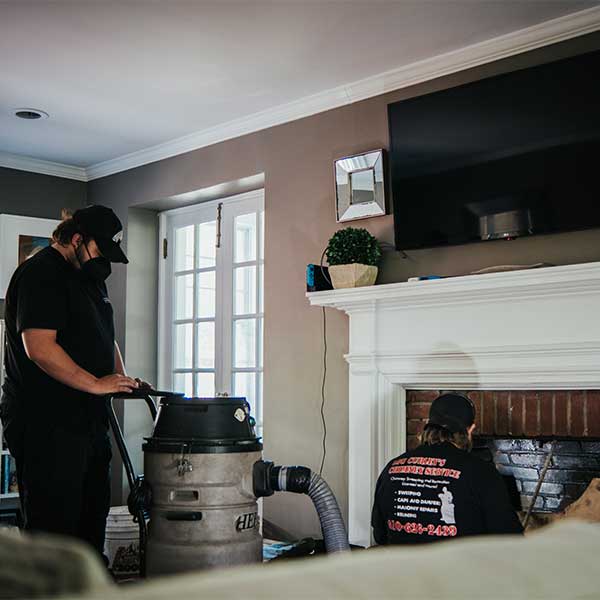
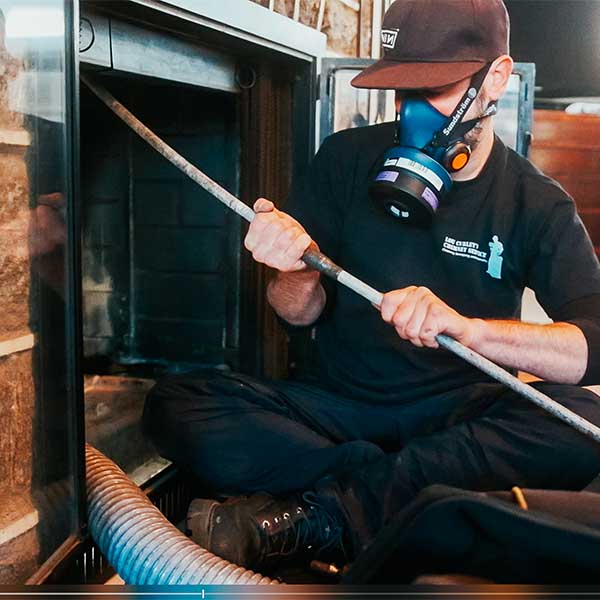
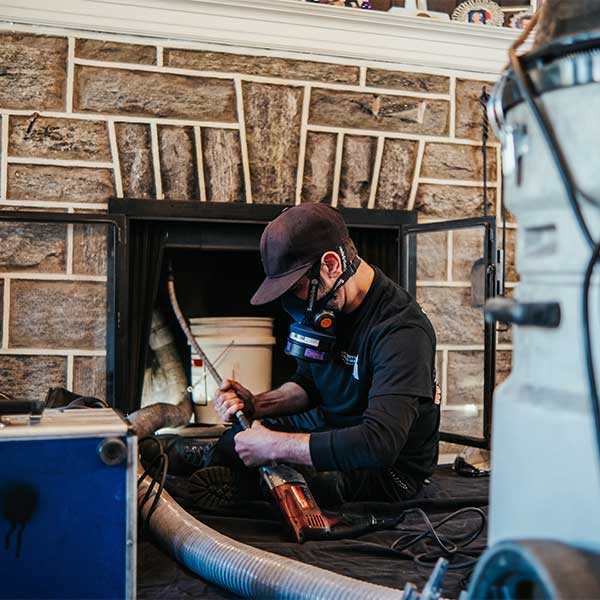
- A better sweeping —When we clean masonry fireplaces, we use rotary brushes that attach to a drill and spin-clean the interior of the chimney. This provides a much more effective cleaning and removes more soot and creosote than a simple wire brush would. While some companies may offer rotary sweeping, it’s typically an additional charge, but here at Lou’s Chimney Service, it’s our standard.
- A better inspection — A flashlight inspection may reveal obvious safety hazards like flue blockages, but it’s not going to provide a good, up-close look at the entire chimney. Instead of naked eye inspections, we perform video scans of the entire interior of the flue. Should we find defects or damage, we’ll show you pictures of our findings so you don’t have to just take our word for it. We choose to include a video scan with every inspection because we know our clients want the peace of mind that comes with knowing the chimney is clean, free of damage, and ready to be used. Again, some companies may offer this service, but it’s typically an add-on.
- A better technician —Unfortunately, no training is required to become a chimney sweep, and many companies set up shop without getting any formal training or certification. Here at Lou Curley’s Chimney Service, we know that the more training and education we receive, the better we’ll be at serving our customers, which is why we’ve invested in every available certification from the CSIA, F.I.R.E., and the NFI. We’re the only chimney company in Pennsylvania to hold all of those certifications, and we’re also the only CSIA Master Chimney Sweep in PA, so when we’re in your home, you can be confident you’re in good hands.
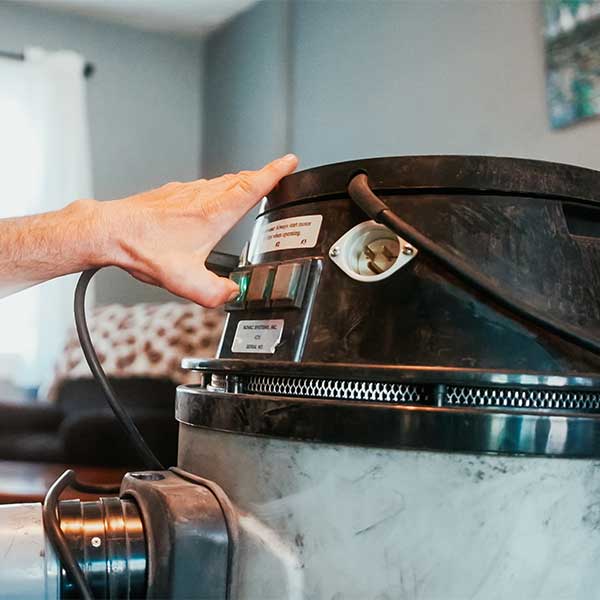

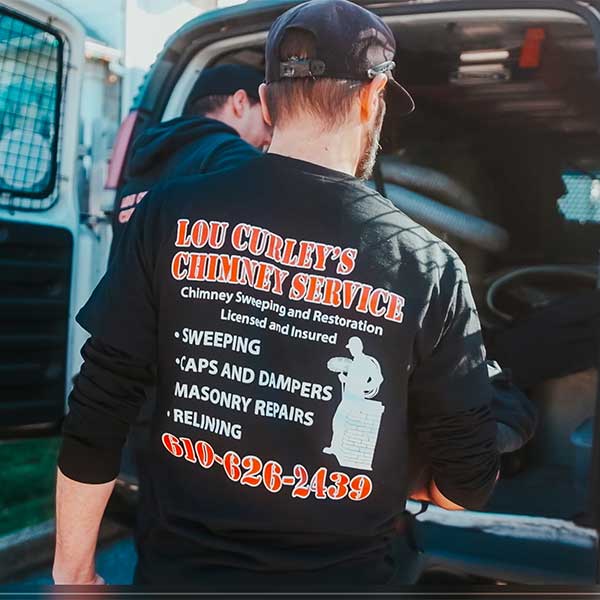
How Often Should You Clean or Sweep Your Chimney?
Use, system design, burning habits, type of wood burned, house pressures, and a multitude of other factors all affect the chimney system and determine how often you should have your chimney swept.
The National Fire Protection Association (NFPA) states that every chimney should be inspected annually, whether it vents a fireplace, stove, gas furnace/boiler, or oil furnace/boiler. If the inspection reveals a soot or creosote buildup of 1/8” or greater, the chimney should be cleaned/swept.
Why Is It Important To Maintain a Regular Chimney Cleaning Schedule?
That’s a great question. Aside from keeping your home and fireplace spick and span, why should you plan to schedule a chimney cleaning service every year?
Despite how far technology has come and the advancements we’ve made in just about every industry, there are still some things that are simply unpreventable. Byproducts created during combustion are a great example – no matter the fuel source or type of fireplace system, the harsh and dangerous fumes naturally produced in a fire are inevitable. Think about the black soot deposits found around the rim of a candle… Even if you’re good at remembering to trim the wick, you’re likely to still find residue at some point simply because of how the fire burns.
The same is true for your fireplace, only on a much larger, much more dangerous scale. Every time you enjoy a fire in your fireplace, the acidic gases and other particulate matter present in the exhaust will begin to collect on the inner walls of your chimney and form a substance called creosote. Not only is creosote dirty and generally unpleasant to look at, it’s also a huge hazard if left too long in your chimney flue. Creosote greatly increases your risk for both general system inefficiencies as well as more serious dangers like chimney fires and exposure to dangerous and deadly chemicals such as carbon monoxide.
What if you don’t even use your fireplace? Is it still important to have it regularly swept out?
Yes, even if you don’t use your fireplace regularly (or at all), it’s still required to have your appliance professionally cleaned out every year. Why? Because in addition to the dangers and potential damage associated with regular use, there are other non-combustion-related issues that could wreak havoc on your system, as well. After all, if you don’t ever light fires in your system, how else would you know if a family of animals has found themselves a cozy new home inside your chimney? And what if you decided you did want to use your fireplace one day?
When it comes to safety and overall preparedness, it’s always better to be proactively safe than reactively sorry. That’s why we’re here – to make your fireside experience as safe and enjoyable as possible. To schedule your annual chimney sweep service, reach out to the team at Lou Curley. Fill out this appointment request form online or give us a call at 610-626-2439 to get started.
How Does the Composition of Creosote Vary Based on Fuel Type? Does That Affect the Cleaning Process?
While creosote is typically only thought of with regard to wood-burning appliances, the truth is that all combustion – regardless of fuel source – produces the highly flammable substance, just in varying amounts (with wood coming in at the top). Thus, the composition of creosote itself depends less on the specific fuel type and more on the operational habits and overall maintenance of the fireplace system.
- Stage 1 Creosote: If you have a wood-burning fireplace and you always make sure to only burn properly seasoned (dried out) timber at a really high temperature, it’s likely that the creosote deposits naturally created during combustion will be lighter, flakier, and ultimately easier to remove. The production of stage 1 (or 1st degree) creosote is, unfortunately, unavoidable, but because the soot content is generally very high, professionals can remove it easily using a chimney brush.
- Stage 2 Creosote: When the chimney draft is not ideal and the system receives an insufficient amount of air to utilize during combustion, not only will it alter the way the fire burns, but will produce the much more difficult to remove stage 2 (2nd degree) creosote. Unlike the light and flaky composition of the former degree, creosote in this form appears shiny and more congealed. Second degree creosote contains hardened tar, which makes it significantly harder to effectively remove. This sweeping process requires different, more powerful tools than a meager chimney brush, making the whole cleaning service substantially more involved.
- Stage 3 Creosote: The most concentrated of the three, stage 3 (3rd degree) creosote presents as a thick layer of tar coating the walls of a chimney flue. Third degree creosote hardens after it is formed and then is recoated every time a new fire burns. Whether a result of a wrong-sized flue, incomplete combustion, lack of chimney insulation, or other similar issue, stage 3 creosote is by far the hardest to remove.
How is stage 3 (glazed) creosote removed?
Ultimately, it depends on every individual situation, but sometimes, in cases where the amount of glazed creosote is extremely high, the best course of action is to remove and replace the chimney liner to ensure optimal and efficient performance. Though, it is also possible for a chimney expert to apply specially formulated products meant to soften the hardened creosote deposits making removal easier and safer for your entire structure.
Do Creosote Sweeping Logs Work as a Replacement for a Chimney Sweep Service?
Depending on how long you’ve had a fireplace, you’ve likely seen or heard about creosote sweeping logs. Also referred to as chimney sweeping logs, this small piece of timber is infused with additives designed to limit the production of new creosote and loosen the grip of existing deposits within your flue. Easily accessible, widely available, and priced between $20-$30 a pop, it’s no wonder why many homeowners might sooner invest in a creosote sweeping log as opposed to a professional chimney sweeping service.
But, do they really work?
Yes…and no. Because of their curated blend of ingredients, the smoke produced from burning such a product contains particles that latch onto the creosote deposits accumulating within your system. And while this is effective in reducing the overall risks associated with the highly flammable substance – especially since the additives continue to break down these deposits for the next one to two weeks of fires – it doesn’t actually remove it.
So, while burning a creosote sweeping log every once in a while certainly won’t hurt anything (and indeed is beneficial), never use one with the intention that you’re taking your annual chimney cleaning service into your own hands. The only way to physically remove the harmful residue created during combustion is to have a professional come in and perform a chimney sweep service.
Fortunately, if you live in Delaware County or any of the neighboring communities, Lou Curley’s Chimney Service is just the place to call. With certifications and memberships from the most esteemed organizations in the industry, you can trust the team at Lou Curley for a job well-done. Whether it’s time to schedule your yearly chimney inspection or cleaning, or perhaps you’re looking to have some repair work done, our dedicated CSIA-certified techs can do it all. Request an appoint online or call us at 610-626-2439 to learn more, today!
How Do I Best Maintain My Chimney Between Cleanings?
So, if creosote production and accumulation is unavoidable, what do you do? How do you do your part to prevent the more intense 2nd and 3rd degrees of creosote? Are there best practices when it comes to fireplace operation that help improve both your fireside experience and system longevity?
Sure, you might not be able to completely prevent creosote and other byproducts condensing and forming on the vulnerable inner walls of your chimney, but there are ways you can be sure that you’re treating your system with the respect it deserves:
- Only burn well-seasoned firewood – When wood has not been adequately dried out, the moisture content can produce a smoky fire with a messy burn. Because of the excess water contained within the fuel, complete combustion is not possible and ultimately results in a thick smoke that will later form stage 2 or 3 creosote. On that note, be sure to never burn anything but wood in your fireplace. Things like paper, plastic, cardboard, and other materials will contribute to poor performance and increase in harmful byproducts.
- Ensure your flue has been properly primed – For as powerful as our hearth appliances are, they are also extremely sensitive to drastic changes in temperature. As such, if there is a significant difference in heat between your fireplace and chimney flue, the smoke will have a hard time drawing up and out of the structure, leaving it to cool and condense on the inside of your chimney liner. To prepare your system, try lighting some tightly rolled up newspaper and holding it just above your fireplace for a few minutes before you plan to enjoy a fire.
- Encourage optimal airflow – Chimney systems function entirely on the principle of airflow – more specifically, the transfer and exchange of outside air, inside air, and the exhaust created during combustion. If this process is hindered in any way, not only will your chimney have to work harder to properly ventilate, but the creosote accumulation will happen more quickly.
Ultimately, though, the best way to ensure you are operating a safe and efficient appliance is to always stay on top of your chimney cleaning services. While these above listed practices will certainly help with system performance and longevity, a yearly chimney sweep is the only surefire way to know that your flue is free from any blockages and obstructions.
No matter the issue, if it’s fireplace, chimney, or otherwise hearth-related, Lou Curley’s Chimney Service has got you covered. To schedule your annual chimney cleaning with the best full service chimney company in the Delaware County, PA area, get in touch with a member of our team. You can reach us online or give us a call at 610-626-2439. We’d love to tell you a bit more about who we are, what we do, and why we’re a good fit for you. Get started today – we can’t wait to meet you!
What Should You Look for in a Chimney Sweep?
Because the chimney industry is unregulated, service and training levels aren’t consistent. To ensure you’re in good hands, look for a company that’s certified by a nationally recognized agency in the service you need. When hiring a company to sweep or clean your chimney, verify that they’re CSIA-certified chimney sweeps. To earn this credential, which is considered the “gold standard” of the chimney sweeping industry and should be the minimum requirement for anyone servicing your chimney, you must pass two tests on sweeping practices and code requirements.
When Should You Schedule Your Chimney Cleaning?
Now that you know you should schedule an inspection every year so you’ll know when it’s time for a sweeping and you know what to look for in a chimney sweep, what time of year is best for scheduling these services? While any time of year will do, the best time to schedule a chimney inspection and sweeping is in the spring, right after the heating season ends. Soot and creosote are corrosive and can lead to unpleasant smells and chimney damage, so it’s best to get both out of your chimney as quickly as possible. Sweeping or cleaning your chimney right after the burning season is similar to brushing your teeth right after eating — it’s what’s recommended by professionals!
Ready to schedule your next chimney inspection and sweeping? Or, have a question about options for wood or gas fireplace repairs? Call Lou Curley’s Chimney Service at 610-626-2439 or request an appointment here on our website. We serve our neighbors in Delaware County and the Main Line, and our certified, experienced, and highly trained chimney sweeps will take great care of you and your home — guaranteed. Call today!
Schedule your next chimney inspection now and mark it off your list of chimney services for the year.
